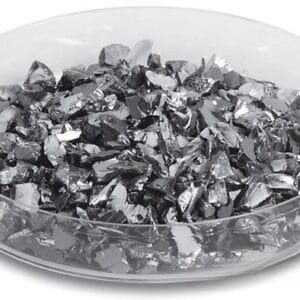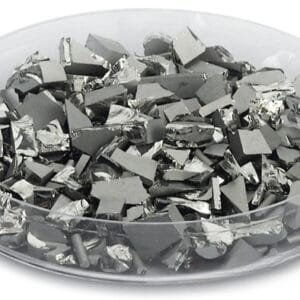Cadmium Evaporation Materials Description
High-purity cadmium evaporation materials are crucial for producing high-quality deposited films in various deposition processes. TFM excels in manufacturing cadmium evaporating materials with purity levels reaching up to 99.999%. Our commitment to stringent quality assurance practices guarantees the reliability and performance of our products.

Cadmium Evaporation Materials Specification
| Material Type | Cadmium |
| Symbol | Cd |
| Color/Appearance | Silvery Gray, Metallic |
| Melting Point | 321 °C |
| Density | 8.64 g/cm3 |
Cadmium Evaporation Materials Applications
Cadmium evaporation materials are essential in several deposition processes, including semiconductor deposition, Chemical Vapor Deposition (CVD), and Physical Vapor Deposition (PVD). They are also used in optics for a variety of applications such as wear protection, decorative coatings, and display technologies. Their high purity and performance are critical for achieving precise and effective results in these advanced technologies.
Cadmium Evaporation Materials Packaging
We ensure that our cadmium evaporation pellets are handled with utmost care to avoid any damage during storage and transportation. This meticulous approach preserves the pellets’ quality, maintaining their original condition and ensuring reliable performance.

 MSDS File
MSDS File



Reviews
There are no reviews yet.